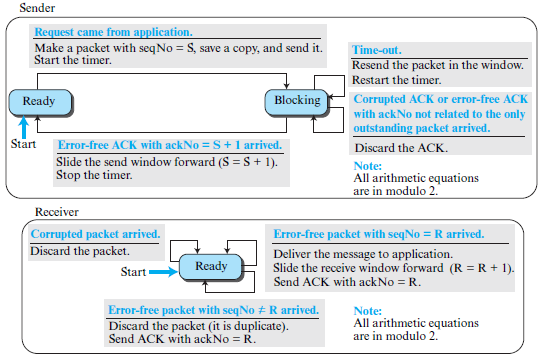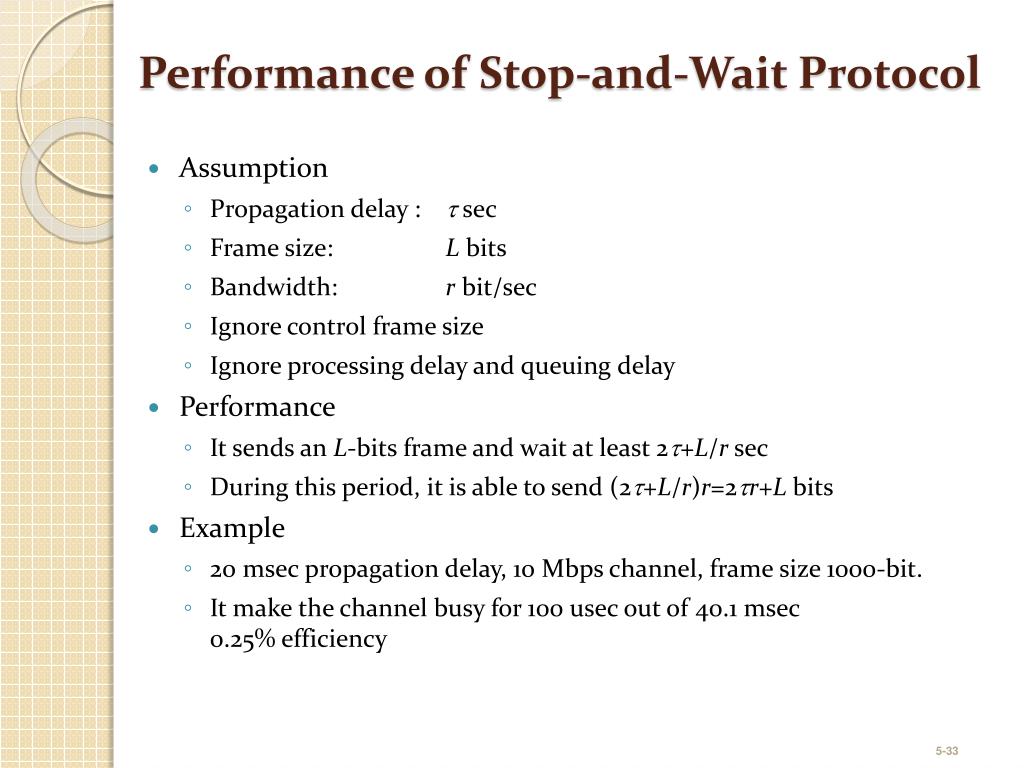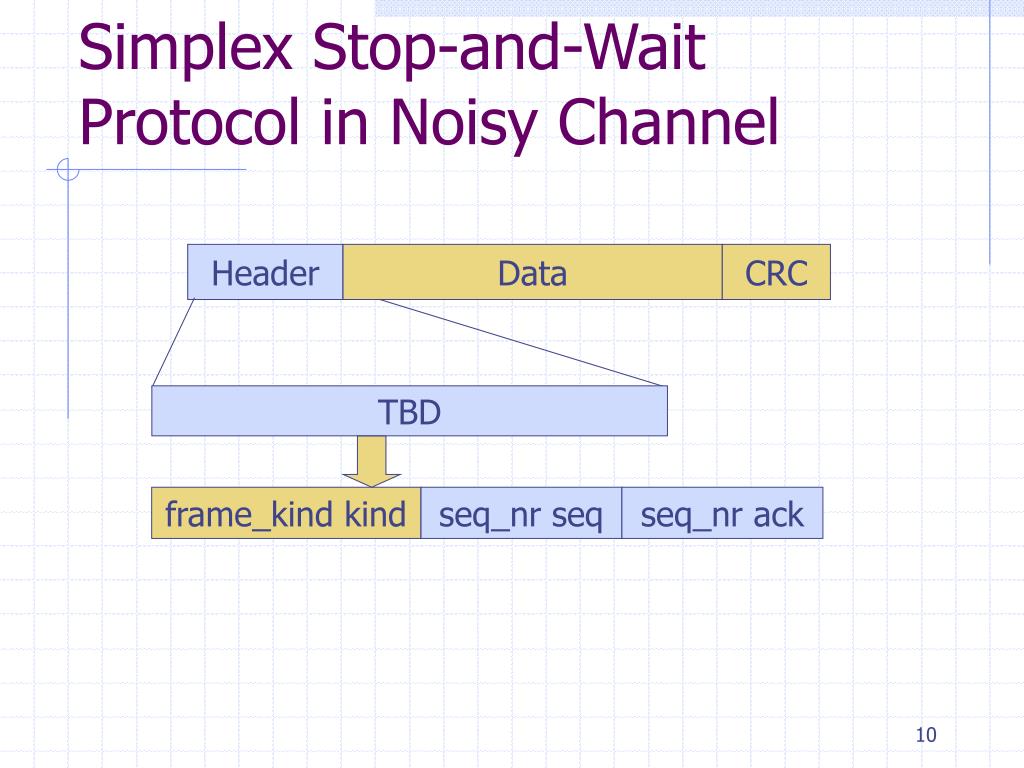

Stop and Wait ARQ executes Sliding Window Protocol with Window Size 1. It can be used in data Link and transport Layers. It is used in Connection-oriented communication. The features of Stop and Wait Protocol are as follows − Moreover, if two devices are a distance apart, a lot of time is wasted waiting for ACKs leading to an increase in total transmission time. As a result, each frame sent and received uses the entire time needed to traverse the link. An individual frame travels from source to destination in this method, and a single acknowledgement travels from destination to source. The drawback of this approach is that it is inefficient. So there is no chance of the frame being lost. The next frame is transmitted only when the first frame is acknowledged. The main advantage of stop & wait protocols is their accuracy.

Through this project we have illustrated and then tackled the possible errors that can happen through erroneous channels during stop-and-wait protocol communication. The working of Stop and Wait Protocol is shown in the figure below − The stop and wait protocol is a special case of the Go-back-N protocol, with window size 1. The flow control method will check that the senders send the data only at a rate that the receiver can receive and process. The Flow-control methods will help in ensuring that the data doesn't get lost. If the sender is transmitting the data at a rate higher than the receiver can receive and process it, the data will get lost. While sending the data from the sender to the receiver, the data flow needs to be controlled.

When the sender gets the acknowledgement (ACK), it will send the next data packet to the receiver and wait for the disclosure again, and this process will continue as long as the sender has the data to send. the time joining message transmitting and acknowledgement receiving) is the sender’s waiting time, and the sender is idle during this time. The sender will stop and wait for the acknowledgement from the receiver. In this, the sender will transmit one frame at a time to the receiver.


 0 kommentar(er)
0 kommentar(er)
